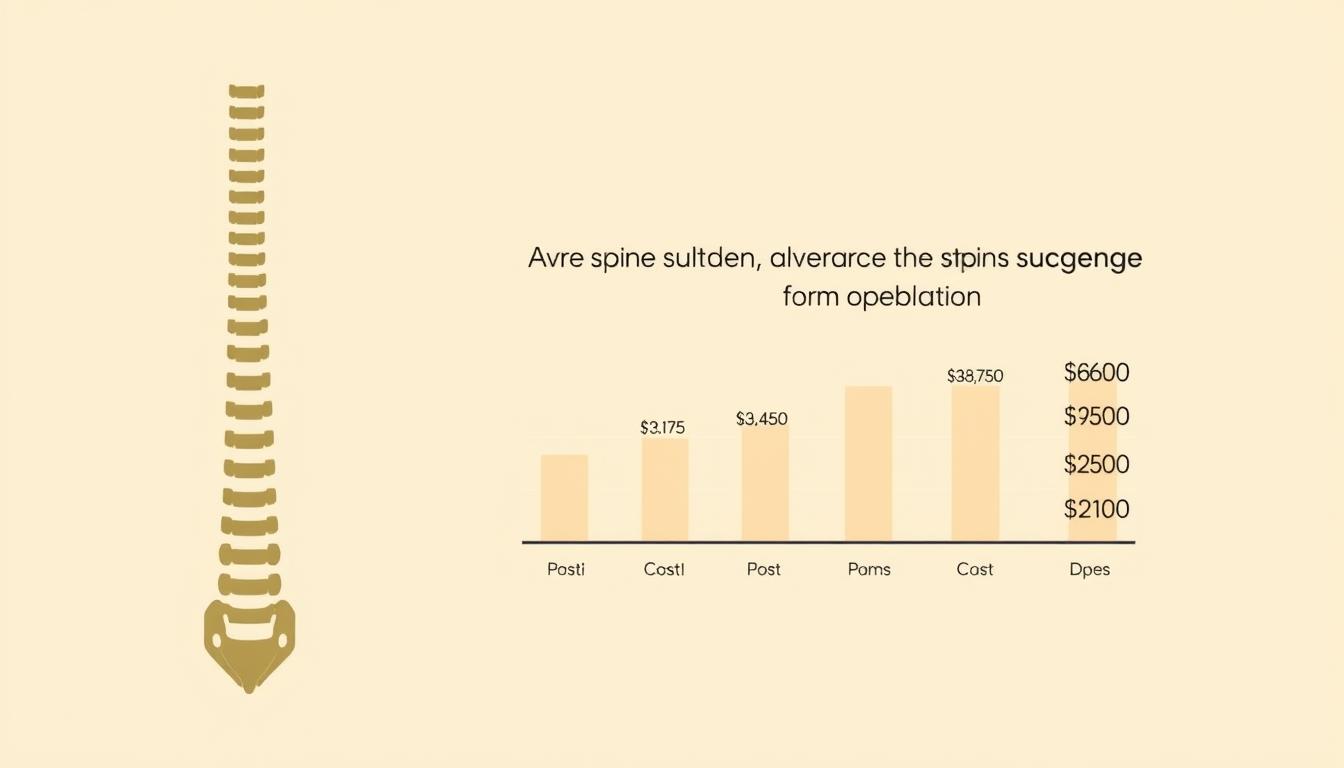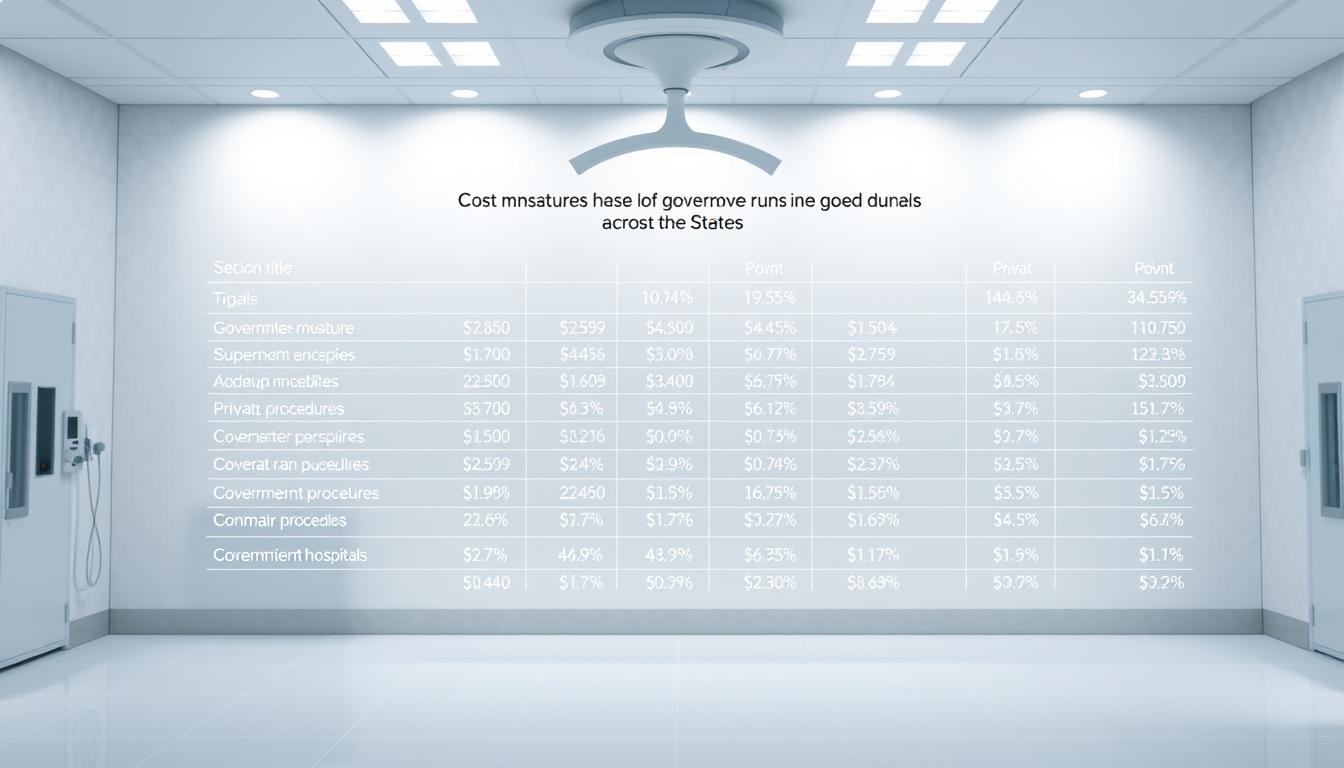Undergoing spine surgery can be a daunting experience, especially when considering the financial implications. In California, the cost of such procedures can vary significantly based on several factors, including the type of surgery, hospital charges, and insurance coverage.
Financial preparation is crucial to manage the expenses associated with spine surgery effectively. Understanding the costs involved and exploring available financial options can help alleviate some of the stress associated with the procedure.

By understanding the intricacies of spine surgery costs and learning how to prepare financially, patients can make informed decisions about their care. This article aims to provide valuable insights into the costs associated with spine surgery in California and offer guidance on managing these expenses.
Key Takeaways
- Understanding the factors that influence spine surgery costs in California.
- Exploring financial options to manage surgery expenses.
- Learning how to prepare for the financial aspects of spine surgery.
- Insights into the average costs associated with spine surgery.
- Tips for reducing out-of-pocket expenses for spine surgery.
Understanding Spine Surgery Options in California
The diverse landscape of spine surgery in California includes various procedures, each with its own benefits and considerations. When facing the need for spine surgery, understanding the available options is crucial for making an informed decision.
Common Types of Spine Procedures
Spine surgery encompasses a range of procedures, including discectomy, laminectomy, and spinal fusion. A discectomy involves removing a damaged disc, often to relieve pressure on a nerve. Laminectomy, on the other hand, involves removing part or all of a vertebra (lamina) to ease pressure on the spinal cord or nerves. Spinal fusion is a more complex procedure where two or more vertebrae are fused together to stabilize the spine.
Each of these procedures is chosen based on the patient’s specific condition, the severity of their symptoms, and their overall health. For instance, a patient with a herniated disc may benefit from a discectomy, while someone with spinal stenosis might require a laminectomy.
Factors That Influence Surgical Decisions
The decision to undergo spine surgery and the choice of procedure are influenced by several factors. The severity of the condition is a primary consideration, as more severe cases may require more invasive surgeries like spinal fusion. The patient’s overall health is also crucial, as certain health conditions can affect the risks associated with surgery.
Additionally, the surgeon’s recommendations play a significant role. Surgeons assess the patient’s condition and advise on the most appropriate procedure based on their expertise and the latest medical evidence. Other factors, such as the patient’s age, lifestyle, and personal preferences, are also taken into account to tailor the treatment plan to their needs.
How Much Does Spine Surgery Cost in California
The cost of spine surgery in California can vary significantly based on several factors. Understanding these costs is crucial for patients to prepare financially for their surgery.
Average Price Ranges by Procedure Type
Spine surgery encompasses a range of procedures, each with its own cost implications. For instance, a discectomy, which involves removing a herniated disc, can cost between $30,000 to $50,000. In contrast, a spinal fusion, a more complex procedure that involves joining two or more vertebrae, can range from $60,000 to over $100,000.
The complexity of the procedure, the surgeon’s fee, and the cost of hospital stay are significant factors that influence the overall cost. Minimally invasive surgeries, for example, might be less expensive than traditional open surgeries due to shorter hospital stays and less tissue damage.
Regional Cost Variations Within California
California is a large and diverse state, and the cost of spine surgery can vary significantly from one region to another. Urban areas like Los Angeles and San Francisco tend to have higher costs compared to rural areas. This is due to the higher cost of living, advanced medical facilities, and the availability of specialized surgeons in urban centers.
For example, a spine surgery procedure in Los Angeles might cost 10% to 20% more than the same procedure in a smaller city or rural area. Patients should consider these regional variations when planning their surgery.
Hospital vs. Outpatient Surgery Center Pricing
The choice between having spine surgery in a hospital or an outpatient surgery center can also impact the cost. Hospitals typically charge more due to the higher overhead costs, including 24-hour care and emergency services. Outpatient surgery centers, on the other hand, offer a more cost-effective option for less complex procedures, with costs often 30% to 50% lower than hospital charges.
However, the decision should be based on the patient’s health needs and the complexity of the procedure. More complex surgeries may require the advanced facilities and care available in hospitals.
Insurance Coverage and Out-of-Pocket Expenses
Understanding insurance coverage is key to managing the financial burden of spine surgery in California. Insurance plans vary widely in what they cover and how much they pay out, making it crucial for patients to review their policies carefully before undergoing surgery.
Most insurance plans cover a significant portion of spine surgery costs, but the extent of coverage depends on the type of procedure, the surgeon’s fees, and the facility where the surgery is performed. For instance, Medicare and many private insurers typically cover procedures like spinal fusion, laminectomy, and discectomy, but may have different deductibles, copays, and coinsurance rates.
What Most Insurance Plans Cover
Generally, insurance plans cover spine surgery when it is deemed medically necessary. This includes procedures to treat conditions such as herniated discs, spinal stenosis, and scoliosis. However, coverage may be subject to certain limitations and exclusions, such as:
- Pre-authorization requirements
- Specific diagnostic criteria
- Use of in-network providers
As Dr. John Smith, a renowned spine surgeon in California, notes, “It’s essential for patients to understand their insurance coverage before undergoing spine surgery to avoid unexpected medical bills.”
Typical Deductibles and Copays for Spine Surgery
Deductibles, copays, and coinsurance rates for spine surgery vary significantly across different insurance plans. On average, patients can expect to pay between $1,000 to $3,000 out-of-pocket for spine surgery, depending on their insurance coverage. For example, a patient with a $1,000 deductible and 20% coinsurance may need to pay $2,000 to $5,000 or more for a spinal fusion procedure.
To minimize out-of-pocket expenses, patients should review their insurance policies and discuss their coverage with their insurer and healthcare provider. As one patient reported, “Understanding my insurance coverage helped me prepare financially for my spine surgery and reduced my stress significantly.”
“The financial burden of spine surgery can be significant, but with the right insurance coverage, patients can reduce their out-of-pocket expenses and focus on their recovery.”— Jane Doe, Spine Surgery Patient
Financial Preparation Strategies
Spine surgery expenses in California can be daunting, but with the right financial preparation, patients can navigate these costs more effectively.
Preparing for spine surgery involves more than just understanding the medical aspects of the procedure; it also requires a comprehensive financial plan. This plan should include budgeting for the surgery itself, as well as related expenses such as rehabilitation and follow-up care.
Creating a Pre-Surgery Financial Plan
A well-structured financial plan is crucial for managing spine surgery expenses in California. Patients should start by estimating the total cost of the surgery, including all associated fees.
- Consult with your healthcare provider to understand the costs involved.
- Check your insurance coverage and understand what is included and excluded.
- Budget for additional expenses such as rehabilitation and medication.
Payment Plans and Medical Financing Options
For many patients, medical financing options can provide a necessary lifeline. These options allow patients to spread the cost of surgery over time, making it more manageable.
| Financing Option | Interest Rate | Repayment Term |
|---|---|---|
| CareCredit | 0% – 26.99% | 6 – 24 months |
| Medisave | Competitive rates | Flexible terms |
How to Negotiate Lower Surgery Costs
Negotiating the cost of spine surgery can be challenging, but it’s not impossible. Patients can take several steps to potentially lower their expenses.
Tips for Negotiation:
- Ask about package deals that include all aspects of care.
- Compare prices among different healthcare providers.
- Discuss your financial situation with your provider.
By employing these financial preparation strategies, Californians can better manage the costs associated with spine surgery, ensuring a more stable financial future.
Hidden Costs to Anticipate
Beyond the initial surgical costs, patients undergoing spine surgery in California should be aware of additional expenses that can significantly impact their overall financial burden. Understanding these costs is crucial for effective financial planning.
Recovery Time and Lost Income Considerations
Recovery from spine surgery can take several weeks to months, during which patients may not be able to work, leading to lost income. It’s essential to plan for this potential loss. Patients should consider saving up for this period or exploring disability benefits if available.
Rehabilitation, Medication, and Follow-up Care Expenses
After surgery, patients often require rehabilitation, which can include physical therapy sessions. The cost of these sessions can vary widely. Additionally, medication for pain management and follow-up care appointments with healthcare providers add to the overall expense.
Some key expenses to anticipate include:
- Rehabilitation costs, including physical therapy
- Medication expenses for post-surgery pain management
- Follow-up care appointments
- Lost income due to recovery time
By understanding these hidden costs, patients can better prepare financially for spine surgery in California. It’s not just about the surgery; it’s about the overall journey to recovery.
Conclusion
Navigating the financial aspects of spine surgery in California can be challenging, but being informed is key to managing expenses effectively. Understanding the spine surgery price in California and associated costs helps patients prepare financially for their procedures.
By considering factors such as insurance coverage, hospital vs. outpatient surgery center pricing, and potential hidden costs, individuals can develop a comprehensive financial plan. This proactive approach enables patients to focus on their recovery, rather than stressing about the financial implications of their California spine surgery expenses.
Ultimately, thorough financial planning and a clear understanding of the costs involved empower patients to make informed decisions about their care, ensuring a smoother and less stressful experience.
FAQ
What is the average cost of spine surgery in California?
The average cost of spine surgery in California varies widely depending on the type of procedure, ranging from $50,000 to over $150,000.
How much does a spinal fusion surgery cost in California?
Spinal fusion surgery costs in California can range from $80,000 to $200,000 or more, depending on the complexity of the procedure and the surgeon’s fees.
Are there any regional cost variations for spine surgery within California?
Yes, costs can vary significantly depending on the region within California, with urban areas like Los Angeles and San Francisco tend to be more expensive than rural areas.
What are the typical out-of-pocket expenses for spine surgery in California?
Out-of-pocket expenses for spine surgery in California can include deductibles, copays, and coinsurance, which can range from $1,000 to $10,000 or more, depending on the insurance plan.
Does insurance cover the cost of spine surgery in California?
Most insurance plans cover some or all of the costs associated with spine surgery in California, but the extent of coverage varies depending on the plan and the specific procedure.
Are there any financing options available for spine surgery in California?
Yes, many healthcare providers and medical financing companies offer financing options and payment plans to help patients manage the costs of spine surgery in California.
How can I negotiate lower surgery costs for spine surgery in California?
Patients can negotiate lower surgery costs by comparing prices among different providers, asking about discounts or promotions, and working with their insurance company to optimize their coverage.
What are the costs associated with rehabilitation and follow-up care after spine surgery?
Rehabilitation and follow-up care costs can add several thousand dollars to the overall cost of spine surgery, including physical therapy, medication, and follow-up appointments.
How can I estimate the total cost of spine surgery in California?
To estimate the total cost of spine surgery, patients should consider the surgeon’s fees, hospital or surgery center costs, anesthesia fees, and any additional expenses, such as rehabilitation and follow-up care.




